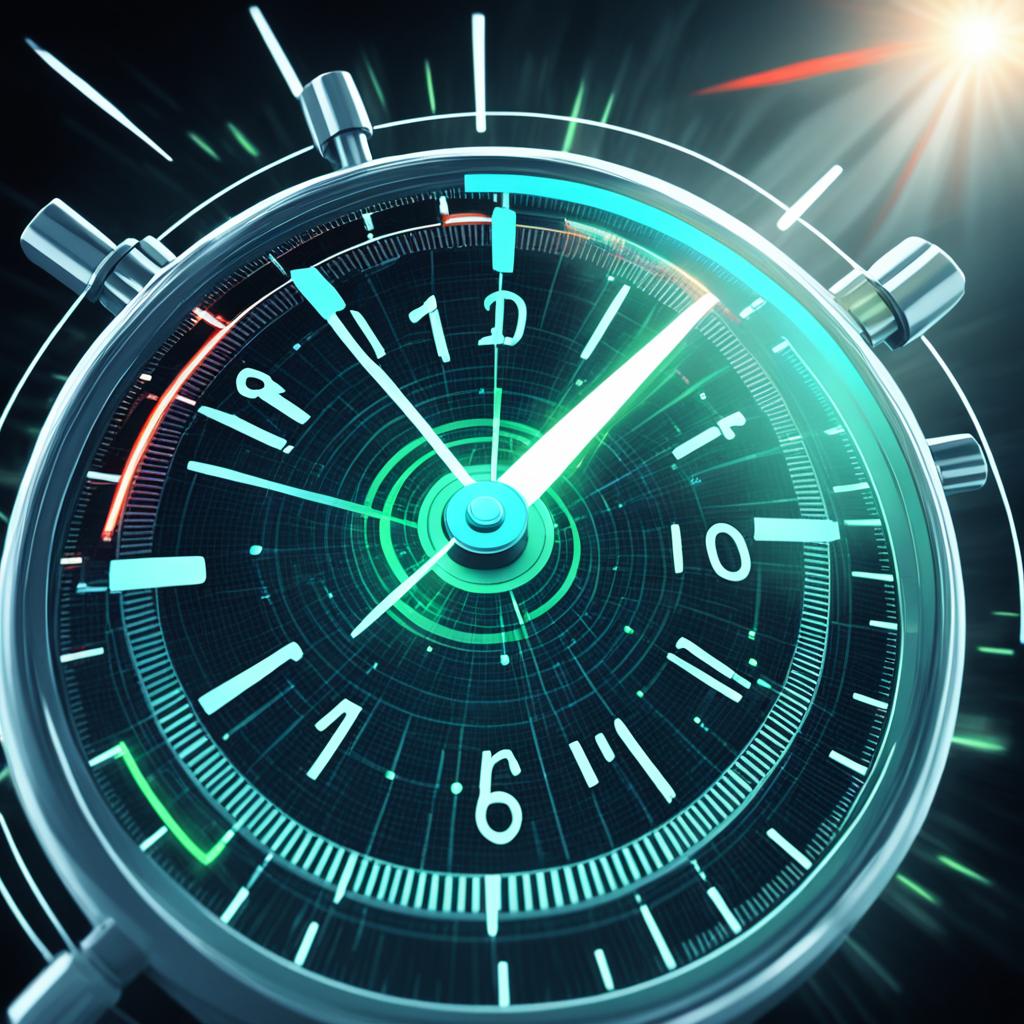Have you ever wondered just how far light can travel in the blink of an eye? Brace yourself for a mind-boggling revelation as we delve into the minuscule world of attosecond time frames. Researchers have made groundbreaking discoveries about the interaction between light and matter, unlocking a level of precision never before achieved. But here’s the question: in one attosecond, just how far does light really travel? Prepare to have your understanding of time and distance challenged.
In the realm of ultrafast processes, scientists have measured that light can traverse a distance of approximately 0.3 nanometers in one attosecond. To put that into perspective, it’s like a needle moving through a haystack filled with subatomic particles!
This incredible insight into the distance covered by light in such a minuscule amount of time opens up new possibilities for research in physics, chemistry, biology, and beyond. With attosecond precision, scientists can capture the intricate dance of electrons, unravel the mysteries of chemical reactions, and explore the dynamics of complex molecular structures. But how does this newfound knowledge impact our understanding of the world around us? Let’s find out!
The Progression of Time Measurement

Over the years, the field of time measurement has advanced significantly. In the past, capturing events at the microsecond level was considered groundbreaking. However, with advancements in technology, researchers have been able to delve into even smaller timescales.
The progression from nanoseconds to picoseconds and femtoseconds has been critical for understanding the movements of atoms within molecules and engineering semiconductor devices. Currently, the focus is on attosecond and zeptosecond timeframes, which may provide further insights into the behaviors of subatomic particles. Achieving accurate time measurement in these ranges requires the development of more advanced pulse-generating technologies, such as femtosecond lasers and high-energy X-ray pulses.
| Time Measurement Units | Conversion Factors |
|---|---|
| Nanosecond | 1 nanosecond = 1 × 10^9 seconds |
| Picosecond | 1 picosecond = 1 × 10^12 seconds |
| Femtosecond | 1 femtosecond = 1 × 10^15 seconds |
| Attosecond | 1 attosecond = 1 × 10^18 seconds |
| Zeptosecond | 1 zeptosecond = 1 × 10^21 seconds |
Exploring Attosecond Phenomena

The ability to study events on attosecond timescales has revolutionized scientific exploration. With advancements in technology, researchers can now observe the intricate movements of electrons and the dynamic behavior of complex protein molecules in unprecedented detail. Attosecond phenomena have emerged as a valuable tool in fields such as electronics, medicine, and materials science.
By directly observing the wave oscillations of light, scientists gain invaluable insights into the electrical components of electromagnetic waves, enabling a deeper understanding of electron motion within atoms and molecules. This knowledge is crucial for controlling and measuring quantum states of matter, leading to potential breakthroughs in various applications.
Chemical reactions and molecular dynamics can be explored at an entirely new level with the use of attosecond pulses. Researchers can now unravel the intricate steps involved in chemical reactions, providing crucial insights into reaction pathways and reaction kinetics. Understanding molecular dynamics at such a small timescale allows scientists to optimize materials for specific properties and engineer new compounds with enhanced functionalities.
The exploration of attosecond phenomena continues to push the boundaries of our knowledge and fuel advancements in countless scientific disciplines. By peering into the intricate realm of ultrafast processes, scientists are paving the way for groundbreaking discoveries and technological innovations.
Attosecond Time and Light Travel

To comprehend the distance covered by light in one attosecond, it is essential to consider the speed of light. Light travels approximately 300,000 kilometers (or 186,000 miles) per second. In one second, light can travel about 30 centimeters or one foot.
In contrast, in one attosecond, light only travels about 300 nanometers, which is roughly the size of the largest particle that can pass through a HEPA filter. This vast difference in distance highlights the incredible speed and precision of attosecond timescales.
| Light Speed per Second | Light Speed per Attosecond | |
|---|---|---|
| Distance | Approximately 300,000 kilometers (or 186,000 miles) | Approximately 300 nanometers |
| Equivalent Measurement | About 30 centimeters or one foot | Roughly the size of the largest particle that can pass through a HEPA filter |
Moreover, the use of high-energy X-ray pulses with femtosecond duration can offer detailed insights into molecular motion, providing valuable information for biomedical research and materials science.
The Future of Time Measurement
As technology continues to advance, the field of time measurement is poised to reach new frontiers. Scientists and researchers are relentlessly exploring the possibilities of measuring time on even shorter scales, down to zeptoseconds and yoctoseconds. These unimaginably brief moments could hold the key to unlocking deeper insights into the intricacies of subatomic interactions and revolutionize our understanding of the fundamental building blocks of the universe.
Furthermore, with the ever-increasing demands for data storage and processing power, terms like zettabytes and yottawatts are anticipated to become part of everyday conversations in the realms of technology and energy sources. The magnitude of these concepts is truly staggering, representing vast amounts of information and mind-boggling amounts of power.
The future of time measurement holds immense potential for advancements in various scientific and technological disciplines. The ability to capture events and phenomena on increasingly smaller timescales will undoubtedly usher in a new era of discovery, enabling us to push the boundaries of our understanding and capabilities. From unraveling the mysteries of quantum mechanics to developing more efficient and sustainable energy sources, the potential applications of future time measurement are limitless, promising a future that is both exciting and full of possibilities.
FAQ
Q: How far does light travel in one attosecond?
A: Light travels approximately 0.3 nanometers in one attosecond, which is equal to 10^-18 seconds.
Q: What is the progression of time measurement?
A: Time measurement has advanced from microsecond to nanosecond, picosecond, femtosecond, and now attosecond and zeptosecond timeframes.
Q: What can attosecond phenomena help us explore?
A: Attosecond phenomena can help us explore electron motion, chemical reactions, and molecular dynamics in unprecedented detail.
Q: How does attosecond time relate to light travel?
A: In one attosecond, light only travels about 300 nanometers, highlighting the incredible speed and precision of attosecond timescales.
Q: What does the future of time measurement hold?
A: The future of time measurement may involve measuring even shorter timescales, such as zeptoseconds and yoctoseconds, and exploring advancements in data and power demands.
